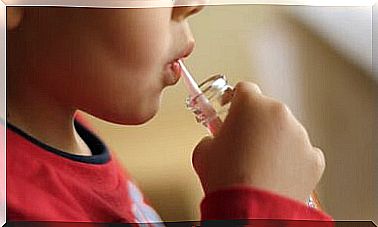What Factors Can Influence The Appearance Of Eating Disorders?

Eating disorders are known to everyone. We are up to date with the high percentage of people who suffer from them. They are mostly girls, yes, but it also affects boys. Likewise, it is known to all that they generate numerous health problems for all those who suffer them.
But not only that. They also have psychological and social repercussions. Interpersonal relationships are deteriorating and emotional distress is gaining ground. The fact is that this type of disorder puts the lives of those who suffer from it at risk, so it is interesting to know the factors or variables that are associated with its appearance, in order to be able to work on them … Remember that it is easier to prevent to cure!
The relationship between body image and eating disorders
Regarding body image and eating disorders, we have to take into account two concepts: dissatisfaction and distortion. Underestimating or overestimating our body, that is, perceiving it in a distorted way, can make us perceive an overweight that is actually non-existent.
This will generate dissatisfaction with our body image, triggering a series of negative emotions that we will try to regulate with our diet. Thus, we will enter a vicious circle of constantly dieting, in order to reach beauty standards that are difficult to achieve. At least that way.

Let’s think that worry about weight is common in most adolescents and young people without it having to be a problem. Like everything, when it becomes excessive and intense is when the person can take desperate measures to lose weight.
Another risk factor related to this is the body mass index. Studies have shown that reaching adolescence with a high BMI (body mass index), indicating overweight, can lead to the onset of these eating disorders.
The role of society in eating disorders
Of course, we must not forget that dissatisfaction and distortion of body image are fed and in some cases promoted by the society in which we all participate. In it, thinness is promoted as the most desirable way to be. In addition, it is associated with positive values such as youth, prestige, high self-esteem and elegance. That is, it is sold as the first condition to accept oneself and feel accepted by others.
At the same time, having a high weight (even slightly) is associated with negative values such as sloppiness, lack of will, dirt, etc. This causes people to start miracle diets, in which they are intended to lose weight in a very short time, which can lead them to lose control and continue to restrict their diet beyond a real goal.

All of this has a greater influence on young women and adolescent girls. But why is it? Well, because in them the need to be thin is more culturally emphasized. In addition, to achieve the values associated with thinness, they have to lose weight. But our closest friends also play their role. Living in a family in which physical appearance and diet are excessively important is another risk factor.
The same can happen if you have friends with these diseases, which can produce a contagious effect. Ultimately, there are numerous factors that play a role in eating disorders. Taking them into account will help us to try to instill in young people some values of self-esteem and personal fulfillment that go beyond body image and their weight … Put your grain of sand!
Images courtesy of Jairo Alzate, Jennifer Burk, and Dominik Martin.









